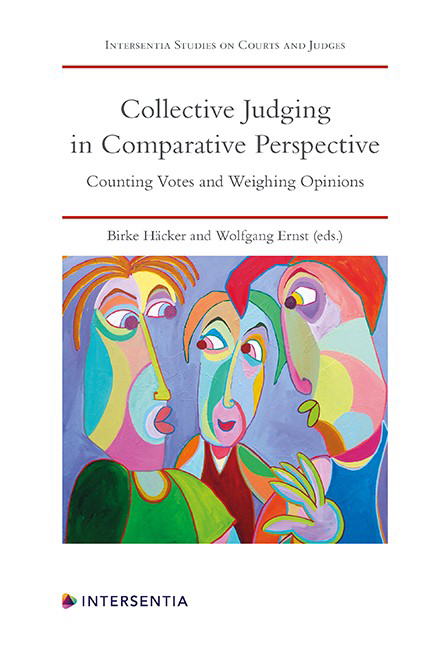Book contents
- Frontmatter
- Preface
- Contents
- List of Cases
- List of Contributors
- PART I DESIGNING COLLEGIATE COURTS’DECISION-MAKING PROCESSES
- PART II COLLEGIATE COURTS IN THE COMMON LAW TRADITION
- PART III COLLEGIATE COURTS IN THE EUROPEAN CIVIL LAW TRADITION
- PART IV COLLEGIATE COURTS IN A NON-EUROPEAN CIVIL LAW JURISDICTION: THE CASE OF JAPAN
- PART V SUPRANATIONAL AND INTERNATIONAL COLLEGIATE COURTS
- PART VI VOICES FROM THE AUDIENCE AND CLOSING REMARKS
- About the Editors
Chapter 5 - Collegial Decision-Making in the US Courts of Appeals
Published online by Cambridge University Press: 09 February 2021
- Frontmatter
- Preface
- Contents
- List of Cases
- List of Contributors
- PART I DESIGNING COLLEGIATE COURTS’DECISION-MAKING PROCESSES
- PART II COLLEGIATE COURTS IN THE COMMON LAW TRADITION
- PART III COLLEGIATE COURTS IN THE EUROPEAN CIVIL LAW TRADITION
- PART IV COLLEGIATE COURTS IN A NON-EUROPEAN CIVIL LAW JURISDICTION: THE CASE OF JAPAN
- PART V SUPRANATIONAL AND INTERNATIONAL COLLEGIATE COURTS
- PART VI VOICES FROM THE AUDIENCE AND CLOSING REMARKS
- About the Editors
Summary
INTRODUCTION
EXPLORING THE INTERNAL DECISION-MAKING PROCESSES OF COLLEGIAL COURTS
In advance of the conference for which this chapter was written, Professor Wolfgang Ernst prepared a very thoughtful essay on ‘Designing Collegiate Courts‘ Decision Making Processes – The Fine-Mechanics of Judicial Majoritarianism‘, in which he offered his view of the core problem of collegiate courts:
’In all collegiate courts disagreement between judges must, at least to some degree, be overcome in order to see the pending case decided …. There is a great variety of approaches to what seems to be the core problem of collegiate courts: How to come to a decision in spite of judges‘ disagreement? Insofar as judicial majority-seeking takes place in a conference of judges, the competences and procedures of such conferences are pertinent issues ….
The method by which several judges‘ opinions are fused in deciding the case at hand, and also in shaping the law of the land, is a decisive moment in the exercise of judicial power.‘
Professor Ernst‘s essay reflects on some of the perceived differences between ‘Anglo-American judicial systems‘ and typical ‘continental/civilian judicial system[s]‘. He says that in Anglo-American judicial systems,
’the case at hand is decided by the majority of opinions, the order of the court being established by looking at the constituent individual judges‘ conclusions and end results. The unitary order of the court may be accompanied by multiple reasoning, each opinion developed independently by any judge who finds he must express his individual view of the case.‘
In contrast, Professor Ernst explains that in continental/civilian judicial systems,
‘decision making power [typically] lies with the conference of judges alone. Here, every judge – as a member of the conference – can just do his best to influence the collective decision. However, [the judge] cannot fall back on an individual decision, if he feels that reaching an agreement would unduly compromise his individual view of the case.‘
- Type
- Chapter
- Information
- Collective Judging in Comparative PerspectiveCounting Votes and Weighing Opinions, pp. 57 - 126Publisher: IntersentiaPrint publication year: 2020



